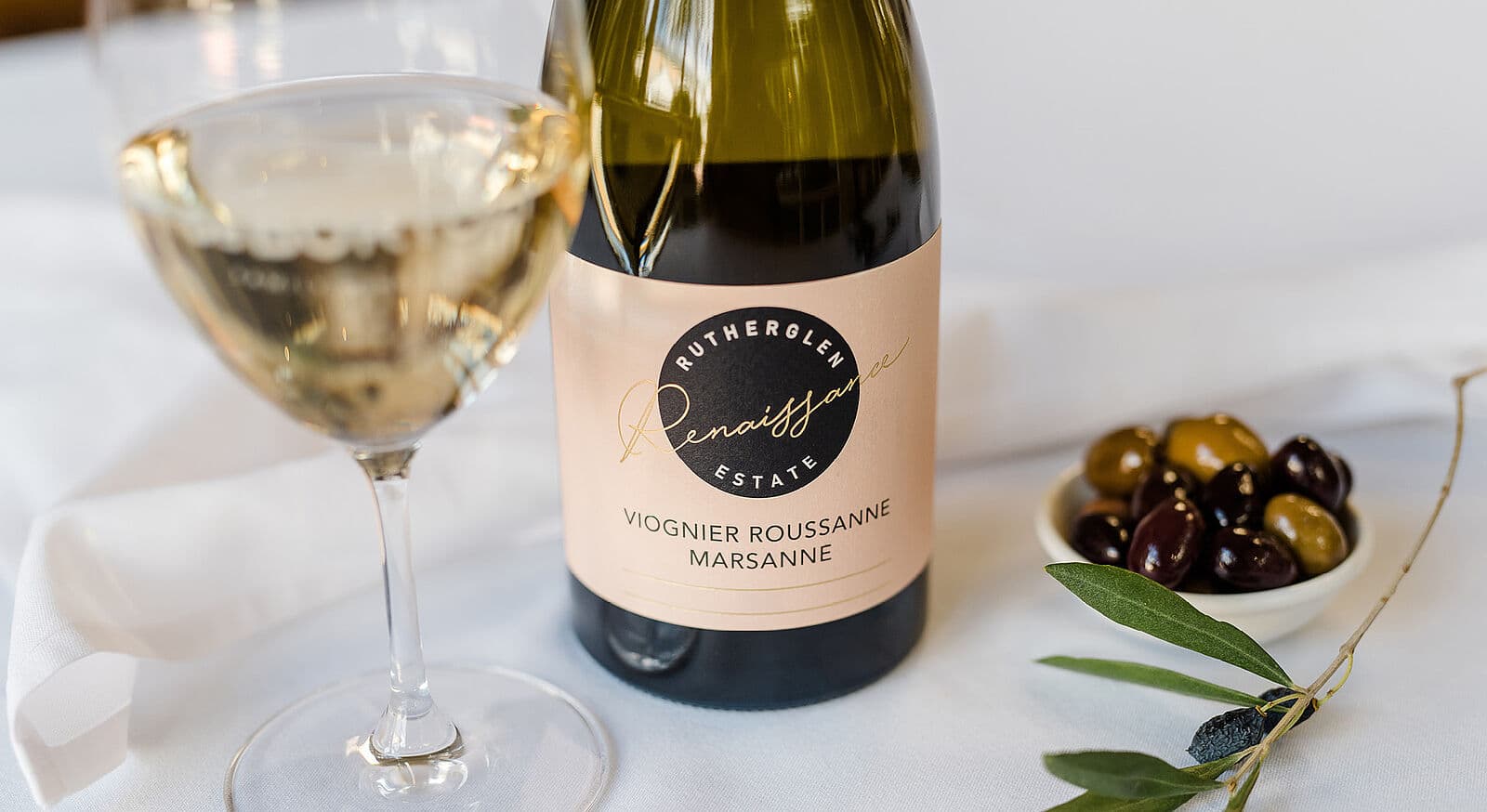Roussanne is a white grape variety from France’s Rhone Valley, prized for its elegant floral aromatics, honeyed complexity, and notable ageing potential. This sophisticated varietal is celebrated for delivering nuanced wines that evolve beautifully over time, developing layers of flavour that reward patience and cellaring.
Often overshadowed by better-known whites, Roussanne offers a refreshing alternative; both familiar and unique. In this guide, we’ll explore what Roussanne wine tastes like and whether it’s dry or sweet. We'll also look at its origins, how to serve it, and even how to pronounce it. Finally, we’ll assess how Roussanne compares to other white wines, especially for curious Australian enthusiasts looking to broaden their wine horizons or discover a standout bottle for their next dinner party.

Let’s begin with the obvious question: how do you pronounce Roussanne? It’s roo-SAHN (roo as in ‘roost’, SAHN rhyming with ‘on’). Phonetically, it’s /ruːˈsæn/. Emphasise the second syllable slightly—roo-SAHN.
As a French name, it shares rhythmic similarity with other Rhone varietals such as ‘Viognier’ (vee-oh-NYAY) and ‘Marsanne’ (mar-SAHN). Getting the pronunciation right not only shows respect for its heritage, but also adds confidence when discussing this varietal with fellow wine lovers. Sure, it’s a small detail, but one that adds charm when ordering or sharing a bottle.
So, is Roussanne dry or sweet? Roussanne wines are typically dry, with moderate to high acidity that provides a crisp backbone and vibrancy. Even though the grape can develop rich, honeyed aromas, winemakers usually vinify it in a dry style to highlight elegance and structure. That said, you may occasionally encounter off-dry or late-harvest versions, especially in specialty bottlings, but the norm remains dry, making it versatile and food-friendly.
The dry style in Roussanne is intentional. It allows the wine’s delicate aromatics and refined texture to shine without overwhelming sweetness.
Roussanne wine includes signature tasting notes, such as:
Oak aging adds gentle spice, toasted almond, and a rounder texture, while blends with Marsanne or Viognier bring added creaminess and floral lift.
In cooler climates, the wine tends to show more citrus, minerality, and a leaner profile, while warmer regions offer richness and tropical hints.
Tasting note at a glance
|
Component |
Description |
|
Aroma |
Pear, apricot, white flowers, honey |
|
Palate |
Medium-bodied, orchard fruit, herbal hints, |
|
Acidity |
Moderate to high |
|
Oak influence |
Toast, almond, spice (if aged) |
|
Blend effect |
Marsanne adds weight; Viognier adds perfume |

Roussanne hails from France’s Rhone Valley—especially northern appellations like Hermitage, Cornas, and Saint-Joseph, and across southern Rhone blends. It frequently appears alongside Marsanne and Viognier in estates like Château Grillet and Châteauneuf‑du‑Pape.
Over time, it has been planted in Provence, Savoie and beyond into Italy, the USA (California and Washington State) and increasingly Australia. The grape’s ability to reflect terroir means these regions each bring something slightly different to the style, from mineral-driven Alpine expressions, to riper, bolder Californian or Barossa Valley takes.
|
Region |
Notable characteristics |
|
Northern Rhone |
Structured, ageworthy Roussanne |
|
Southern Rhone |
Blended, aromatic styles |
|
Provence, Savoie |
Regional single-varietal expressions |
|
Italy, USA (CA, WA) |
New-World, fruit-driven styles |
|
Australia (eg. Yarra Valley) |
Emerging niche plantings |
Let’s see how Roussanne compares to other white wines-both Rhone kin and global favourites.
|
Grape/wine |
Aroma & flavour profile |
Body & acidity |
Key differences with Roussanne |
|
Marsanne |
Peach, nuts, honey |
Fuller, lower acidity |
Richer texture, less aromatic |
|
Viognier |
Peach blossom, apricot, floral perfume |
Medium to full, low acidity |
More perfumed, less structured |
|
Chardonnay |
Citrus, apple, butter, oak (if used) |
Medium to full, variable |
Roussanne is more floral, herbaceous |
|
Sauvignon Blanc |
Citrussy, grassy, zingy, bright flavours |
Light to medium, high acidity |
Sharper, less complex fruit profile |
Roussanne delivers a compelling mix of floral elegance, mid-weight structure, and distinctive herb-fruit balance that sets it apart. If you’re looking for a white that’s aromatic yet not overpowering, and textured without being heavy, Roussanne hits a sweet spot.
Serving Roussanne correctly unlocks its full charms:
Decanting: For older or oaks-aged bottles, a brief 30-minute decant can soften tannins and enhance complexity.

Food pairings
Roussanne pairs wonderfully with a range of dishes that echo its creaminess, fruit, and floral notes:
The adaptability of Roussanne means it works just as well with a weeknight risotto as with a festive holiday roast.




Roussanne is still relatively rare in Australia, but that’s changing. Winemakers in Yarra Valley, Rutherglen, McLaren Vale and boutique producers across New South Wales and Victoria are experimenting with this expressive varietal. The cool-climate fruit of the Yarra, for instance, yields bright, floral Roussanne with lifted acidity, while McLaren Vale offers a riper, richer style.
Although small in volume, Australian Roussanne is gaining fans for its complexity, food-friendliness, and cellar potential. As winemakers continue to experiment with Rhone varietals, Roussanne is carving out its place among modern Australian wines.

Yes. Thanks to its solid acidity and structure, Roussanne ages beautifully. Over time, honeyed and nutty complexity emerges, along with deeper flavours like dried apricot and toasted almond. Well-cellared bottles can evolve for a decade or more.
Roussanne is often blended, especially with Marsanne and Viognier, to balance freshness, weight and aromatic lift. Marsanne adds richness and texture; Viognier brings perfumed notes that marry beautifully.
While Roussanne is usually vinified as a dry wine, sweet or late-harvest versions do exist—particularly in France—offering luscious honeyed sweetness reminiscent of dessert whites. These are rare but certainly worth seeking out for fans of complex, off-dry wines.
Note its relatively limited plantings worldwide, but growing interest among enthusiasts and winemakers.
Sign up for offers, wine insights, food and more